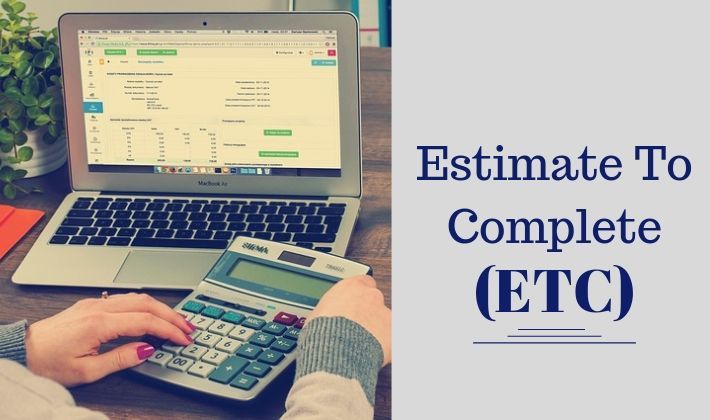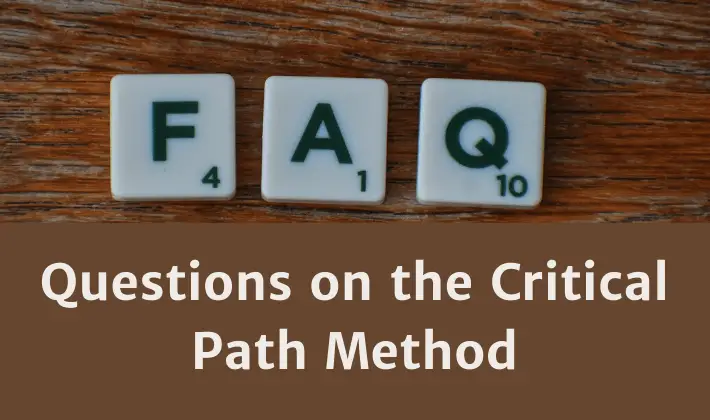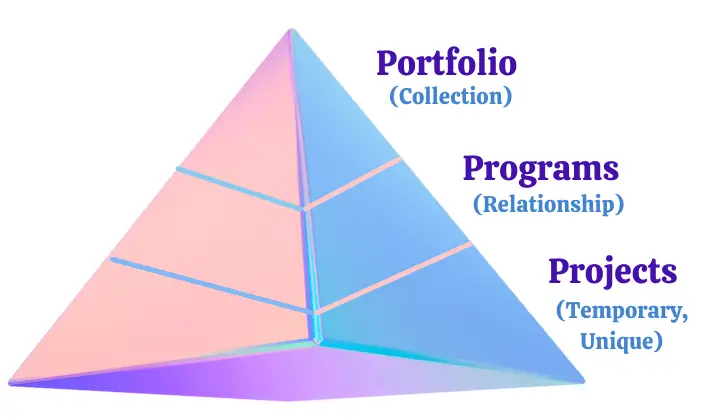Estimate To Complete (ETC) is an estimation of funds required to complete the remaining work of a project.
I have written this post to explain ETC with the help of an example. You will find a complete discourse on ETC in this post, which includes:
- significance of ETC in project management.
- definition and meaning of ETC in Earned Value Management (EVM).
- derivation and explanation of various formulas that are used to compute and calculate ETC.
- difference between ETC and Estimate At Completion (EAC).
After reading this post, you will also be able to solve PMP certification exam’s mathematical questions based on these formulas.
You can also look at the following video to understand ETC.
Estimate To Complete (ETC) In Project Management
Estimate to Complete is the expected cost to finish all the remaining project work.
PMBOK Guide
You can also refer to Max Wideman Glossary to read some other standard definitions of ETC. You can also refer to my other article on EVM definitions.
ETC is is used to forecast the money needed for completing the remaining work of a project.
Note: EVM helps in measuring current performance and forecast future performance of a project. ETC is used for forecasting future performance of a project. In addition to ETC, Estimate At Completion, and To Complete Performance Index are also used for project forecasting.
Estimate To Complete (ETC) Formulas For The PMP Certification Exam
ETC is an estimated cost of remaining work. So, the first step for finding the formulas for ETC is finding a formula for the remaining work.
The remaining project work can be easily understood by looking at the following figure.
The above figure gives us the following formula for the remaining work.
Remaining Work = Total Work – Completed Work
Since EVM is all about The Monetary Values (MV), the next step is to find the MV of remaining work. The MV in EVM can be easily understood by looking at the following figure.
Note: In EVM parlance, monetary values of total work and completed work are represented as Budget At Completion (BAC) and Earned Value (EV) respectively. You can also refer to Earned Value Management System Explained in Easy Language to understand this.
The above figure gives us the following formula:
MV of Remaining Work = BAC – EV
ETC Example and Calculation
Let us use the same example that we used in Basics of Earned Value Analysis to understand ETC.
In that example, the project team had to build 80 tables in 5 days. The estimated cost of building each table was 1000 units of money and the total budget was 80000 units of money. At the end of the third day, the project team was supposed to build had built 40 out of 80 tables but they had actually built only 35 tables at a cost of 36000 units of money. The team was behind schedule and over-budget.
Here is the data from the Table 4 of the previous article:
- total work was 80 tables.
- completed work is 35 tables.
- remaining work is 45 tables.
- actual expenditure for completing 35 tables is 36000 units of money.
Considering the monetary values of the work and the above formulas, we can rewrite the data from example project in EVM terminology as:
- BAC is 80000.
- EV is 35000.
- MV of the remaining work is 45000.
- Actual Cost (AC) is 36000.
Using the above data we can calculate ETC. It is likely to be more that MV of remaining work as the project is currently over-budget.
Going by the ETC definition, we have to determine the expected cost of building the remaining 45 tables. Or, we can say that we have to find the expected cost of performing work that is worth 45000 units of money.
From the above data, we know that the work that was worth 35000 units of money was completed in 36000 units of money. So, mathematically (by using ratio and proportion), we can say that work that work that is worth 45000 units of money should require:
45000*36000/35000 or 46286 units of money.
So, if we go at the current rate, the project team would need 46286 units of money to complete the remaining work.
This scenario can be used to device a generic ETC equation.
Generic ETC Equation
Let’s re-write and mathematically transpose the above expression.
ETC = 45000*36000/35000
ETC = (45000)/(35000/36000)
The numerator in the above expression is MV of remaining work while the denominator is Cost Performance Index (CPI). We can rewrite the above expression as:
ETC = (MV of remaining work)/(Cost Performance Index)
Since we have to determine the expected cost of remaining (future) work, we can should use future projected cost efficiency instead of current CPI in the above expression. We can rewrite the above expression as:
ETC = (MV of remaining work)/(future projected cost efficiency)
We already know that
MV of remaining work = BAC – EV
In EVM, the current and future projected cost efficiencies are represented as Cost Performance Index (CPI) and CPIp receptively. So our generic ETC equation becomes:
Generic ETC Equation ⇒ ETC = (BAC – EV)/CPIp
We can now use this equation to derive other ETC formulas.
Scenario/Formula I – Typical Performance
The project team determines, after analyzing project’s past performance, that the remaining work would be completed at project’s current cost efficiency.
By replacing CPIp with CPI in the ETC equation, we get
ETC Formula I ⇒ ETC = (BAC – EV) / CPI
In EVM parlance, we say that the project performance was typical. Typical means that past performance is indicative of the future performance.
Calculation for our example
ETC = (80000-35000)/(35000/36000)
ETC = 46286 units of money (this figure is same as our mathematical calculation)
It simply means that the project team will require 46286 units of money to build remaining 45 tables.
Scenario/Formula II – Atypical Performance
The project team determines, after analyzing project’s past performance, that the past performance has no bearing on the future performance. The team believes that the aberrations, that happened in the past, would not happen in future. They determine that remaining work would be completed at 100% cost efficiency (as per the original estimates).
By replacing CPIp with 100% (or 1) in the ETC equation, we get
ETC Formula II ⇒ ETC = (BAC – EV)
In EVM parlance, we say that the project past performance was atypical. Atypical means that past performance is not indicative of the future performance.
Calculation for our example
ETC = (80000-35000)
ETC = 45000 units of money
It simply means that the project team will will require 45000 units of money to build remaining 45 tables.
Scenario/Formula III
The project team, after analyzing project’s past performance, determines that the past performance has no bearing on future performance. The team believes that it can neither complete the work at current cost efficiency (CPI) nor at 100%. The future cost efficiency can be either more or less than the current CPI. This can happen due to number of reasons e.g. implementation of new technology, realized opportunities or threats, process changes etc.
In such a scenario ETC equation will remain as it is.
ETC Formula III ⇒ ETC = (BAC – EV) / CPIp
Calculation for our example.
Let us consider that the project team believes that, after building 35 tables, they have better knowledge and skills and their performance will improve in future. Moving forward the efficiency of building tables will improve to 120% (or 1.2).
ETC = (80000 – 35000)/1.2
ETC = 37500 units of money
It simply means that the project team will need 37500 units of money to build remaining 45 tables.
Scenario/Formula IV
The Sponsor has revised the budget to 82000 units of money for building the 80 tables. The original budget was 80000 units of money but not the project team has (82000-36000) or 46000 units of money to complete the remaining work (45 tables).
Since the Sponsor has revised the budget to complete the project work, the project team can now work with the new budget. Original budget is no longer valid.
ETC = (revised budget) – (actual expenditure till date)
In EVM, the revised budget and actual expenditure are represented as Estimate At Completion (EAC) and Actual Cost (AC) receptively.
ETC Formula IV ⇒ ETC = (EAC – AC)
Calculation for our example
ETC = (82000-36000)
ETC = 46000 units of money
It simply means that the project team will will require 46000 units of money to build remaining 45 tables.
Scenario V – Bottom-up ETC
The project team, after analyzing project’s past performance, determines that their original estimates were not good. The team believes that the cost of remaining work should be re-estimated i.e. ETC should be determined afresh.
They re-estimate and determine that each table can be built in 1100 units of money (instead of 1000 units of money as estimate earlier).
Now, the remaining work (45 tables) will require (45*1100) or 49500 units of money.
A fresh ETC can by found by estimating the cost of remaining (unfinished) work in the Work Breakdown Structure (WBS). It is called Bottom-up ETC.
You can re-estimate the cost of remaining work components (work packages and activities) and then total them Upwards in the WBS to determine a Bottom-up ETC.
There is no ETC formula for this scenario.
Estimate To Complete (ETC) vs Estimate At Completion (EAC)
The main difference between ETC and EAC is that ETC is a cost estimation for completing the remaining work in a project whereas EAC is current cost estimation for completing whole project work. Both are related to each other by the following formula.
ETC = (EAC – AC)
EAC is projected budget to complete the total project scope. It includes ETC.
You can refer to my article on Estimate At Completion to find a detailed explanation of EAC concepts and formulas. You will also find other points of difference between ETC and EAC in that article.
Final Thoughts
ETC is an important EVM parameter. It can be computed either by looking at project’s past performance or by re-evaluating the remaining project work. It changes as the project progresses. It should be periodically revised to accurately reflect current status of a project and forecast what might happen in future.
There are number of other formulas in EVM. You can read Earned Value Management Formulas for a quick snapshot of all of them. You need to understand the these to answer the PMP questions correctly. A mere memorization of the formulas is not useful. You may not be able to apply the correct formula in the exam question. It is better understand the concept and then apply the formula(s) as required.
Over To You
EVM is difficult topic. Do you still have any confusion about Estimate To Complete? You can write your question in the comments section below and I will respond to it.
Related Articles
PMP Exam Formulas
I have also compiled a PMP Formulas Cheat Sheet. It contains 45 formulas and 57 abbrviations. It will help you in your exam prep. It is the best and most comprehensive cheat sheet based on the PMBOK Guide 6th edition. You can download it free of cost for your studies.
If you are looking beyond a cheat sheet, then I would suggest you to buy detailed PMP Exam Formula Study Guide by Cornelius Fichtner. It contains detailed explanations of all the formulas along with examples and 105 practice questions.
Disclosure: This article contains affiliate links - it means that, if you buy from any of these links, then I will receive a small commission that would help me in maintaining this blog for free. However, for you, there is no extra cost. I recommend only those products that I believe will definitely help the certification aspirants.









There are 5 different methods, not just 3…
http://www.planningplanet.com/guild/gpccar/project-performance-forecasting
Scroll down to figures 17 and 20 and you can see all 5 of them…..
BR,
Dr. PDG, Jakarta, Indonesia
Dr. PDG, I think you are mistaking ETC with EAC. EAC has 5 formulas – https://www.pmbypm.com/estimate-at-completion-eac-formula/. You can even define one more. Your link shows blank content. Please check.
BR, Praveen.
Hi,
For formula 3, what does the ‘p’ refer to (next to the CPI)? Does that mean the % cost efficiency can be positive (greater than 100% like in your example) or less than 100%.
Thanks!
Michele
Hi Michele,
The ‘p’ represents ‘projected future efficiency’. It could be both – greater than or less that 100%.
BR, Praveen.
Great explanation and if EAC has been calculated before then we can use ETC = EAC – AC.
Thanks Jonathan. True.
Thanks for detailed clarification.
Thanks Faisal
Thanks for the great explanation.
Thanks for the nice post,
In scenario V, where is the ‘800’ come from?
BR,
Dito
Hi Dito, Thanks for pointing this out – it was a typo. I have corrected it.